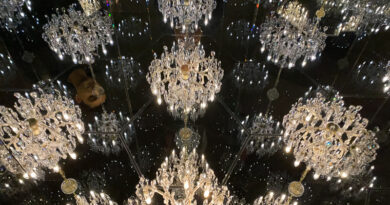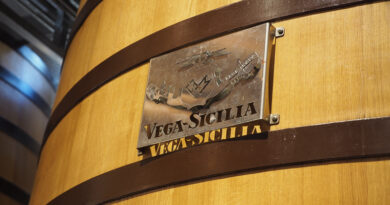Outside of its consumption, wine has no meaning
A year ago, a wine story escaped the industry bubble and made news. It was of a 79 year old Frenchman, Michel-Jack Chasseuil, who had opened a wine museum in a cellar under his home, and was planning to charge visitors €500 (or is it €600? Sources differ) to see this ‘Louvre of wine’.
This isn’t the first time that Chasseuil’s big cellar of 50 000 bottles has been written about – there’s an article about it from three years earlier here by Jane Anson, who visited him.
And from 2014, there’s a story in Decanter of how armed men tried to gain access to his wines: https://www.decanter.com/wine-news/top-french-wine-collector-held-at-gunpoint-9147/
The idea of a collection like this – or that a museum of wines is needed – is ridiculous on many levels. First, that a collector should let their collecting get so far out of hand. By all means, if you have the disposable income, then buy lots of expensive wines and enjoy them. Drink them. Cellar them, but drink them. Don’t just hoard them.
But here we come to the second absurdity: when you are 79, you have a limited drinking career ahead of you. Why tie money up in a foodstuff that you will never consume? Even if you are cellaring so you can drink wines at their maturity, a growing collection as your ability to consume in the future is limited, seems like a miscalculation.
Third, all wines are mortal too, and have an optimum drinking window. Amassed in a collection like this, it’s inevitable that many of these bottles will miss theirs.
Fourthly, that anyone can envisage people paying money to come and look at a stash of bottles is the stuff of fantasy. Especially when it’s a non-trivial sum such as €500.
Further digging reveals an article in RVF that outlines what you get for your money. Visits to Chasseuil Collection International are limited to a maximum of six people per appointment. The experience begins 10 am there is a welcome, and until noon you have discussion with Michel-Jack over a glass of champagne. This is followed by lunch at the Alexandra Palace in the neighbouring five-star hotel of Mazièresen-Gâtine. Then there’s a visit of the cellar from 3:00 pm to 6:00 pm, followed by Crimean Muscat, cigars and eaux-de-vie in the master’s alcoholarium. So it’s a little more than just a cellar tour.
There may well be a few wine collectors out there whose interest in wine extends to the point that they derive pleasure from viewing, or perhaps even handling old bottles. I love wine, but I don’t get this sort of pleasure from seeing old bottles at a distance. For me, the point of wine is to drink it. Outside of its consumption, wine has no meaning.
Everything interesting about wine is channelled to the consumption moment. The point of wine is when the cork is removed (or the screwcap unscrewed, or the tap on the keg is opened, or however one accesses the wine), a glass is filled, and the point of consumption is reached.
Of course, what I’d term ‘subsidiary’ hobbies exist. These are hobbies based on items aside from their primary use. Stamps are for sending letters; stamp collectors exist. Coins are for buying things; coin collectors exist. Why shouldn’t some people derive joy from collecting old wine bottles? Of course, they can – but this is a niche interest only for a very few. In some ways, I have more sympathy with those who collect empty bottles than those who have cellars full of intact bottles whose contents will likely never be sampled.
Is a bottle of wine art? I’d say, not really. The contents of the bottle are the purpose of the bottle, and for these to be enjoyed the bottle must be opened and the contents subject to sensory evaluation and, in the process, consumption. If wine is ever art, it is only when it is being drunk. Is cheese art? No more so than wine. And there’s probably more intention that goes into creating cheese than there is in the wine production process. Cheese and wine don’t have to be art for them to be meaningful.
I often get shown cellars. While it’s interesting to see the bottles that are there, I can’t get very excited about them. Pull an interesting bottle out and open it, and then the excitement starts.
There is no value in a collection of full old bottles. It is not something of national importance, even for a country like France. Chasseuil’s attempts to get his collection housed in a national museum are, in my view, a folly. The miracle of wine is that it captures a place and a time, and makes these accessible to the drinker at a later point. But the wine has to be consumed in order to fulfil this role. It has a limited window to be able to do this: once a wine has become generic old wine, it no longer does this job.
If I look at an old, famous bottle of wine, destined never to be drunk, I only feel a slight sense of sadness. The point of wine is not to look at a bottle. Wine can only be sensed with our proximal senses – our perception of flavour. For it to have meaning, this must always be its destiny.
Chasseuil’s collection continues to be in the news – here’s an article in Le Figaro from November 2021 https://avis-vin.lefigaro.fr/domaines-et-vignerons/o150542-michel-jack-chasseuil-l-homme-aux-50-000-bouteilles
Outside of its consumption, wine has no interest, nor any meaning.




